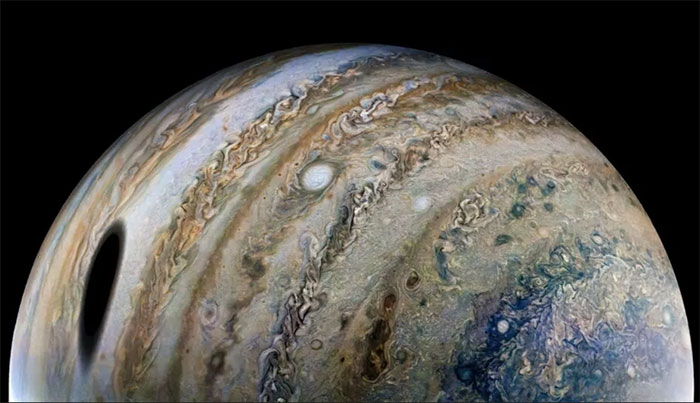The photo of Jupiter has startled viewers due to a large dark streak appearing on the planet’s surface, resembling a “hole.”
In an image captured by NASA’s Juno spacecraft, a mysterious “black hole” on the surface of Jupiter – the largest planet in the Solar System – was unexpectedly observed.

This is actually the shadow of Ganymede.
However, the reality is not as frightening as you might think. This is not a hole, but merely the shadow of Ganymede – Jupiter’s largest moon, left behind in its path.
Ganymede is also the largest satellite in the Solar System, even larger than the planet Pluto, with a radius of 2,634.1 km. In the past, Ganymede was even considered a planet.
Ganymede is primarily composed of silicate rock and ice. Recently, scientists have discovered the presence of a magnetic field on this moon. They also believe that beneath the layers of ice on Ganymede lies a thick ocean of salty water, located about 200 km beneath the surface of the satellite.
According to NASA, to capture this stunning image, the Juno spacecraft flew at a distance of 71,000 km from the surface of Jupiter, which is about 15 times closer than Ganymede’s orbital distance of 1.1 million km. “JunoCam captured this image from a very close distance to Jupiter, making Ganymede’s shadow appear particularly large,” NASA stated.
Nasa also shared that the Juno spacecraft is conducting a long-term mission to study the weather and dynamics of Jupiter. Researching this planet from a close distance allows scientists to understand how large planets can behave in other solar systems.


















































